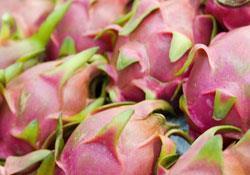
Taiwanese dragon fruit has finally been granted Japanese market access after nine years of campaigning, Taiwan's Council of Agriculture (COA) has said.
"The Japanese Ministry of Agriculture, Forestry and Fisheries issued an official notice on 16 April on its decision to allow the entry of Taiwan-grown dragon fruit, " said Ko Wen-chun, a section chief at the COA's quarantine department.
Dragon fruit has become one of the most popular fruits in Taiwan and it is grown on a total of 800 acres (323ha) across the country, Focus Taiwan reported.
The annual yield is around 15,000 tonnes at a value of around T$420m (US$13.38m).
"Our dragon fruit has great market potential, but it has to pass rigorous quarantine checks before it can be exported to Japan, " Mr Ko said.
Taiwanese dragon fruit plays host to both the Oriental fruit fly and melon fly, a factor which made it tough for Taiwan to obtain export approval.
In 2001, Taiwanese quarantine authorities developed a dragon fruit disinfestation technology and in 2003 developed a high-temperature steaming technique to kill fruit flies on dragon fruit.
"We then filed an application with Japan in 2004 for dragon fruit exports and finally passed Japan's stringent quarantine examinations this year, " Mr Ko said.
It is expected Taiwan will ship around 100 tonnes of dragon fruit this season, and the country exports around 11,000 tons of fresh fruits to Japan each year, at a value of about T$670m (US$21.36m). Popular exports are mangoes, grapes, papayas, mandarins, pomelos, lychees, bananas and pineapples.






No comments yet